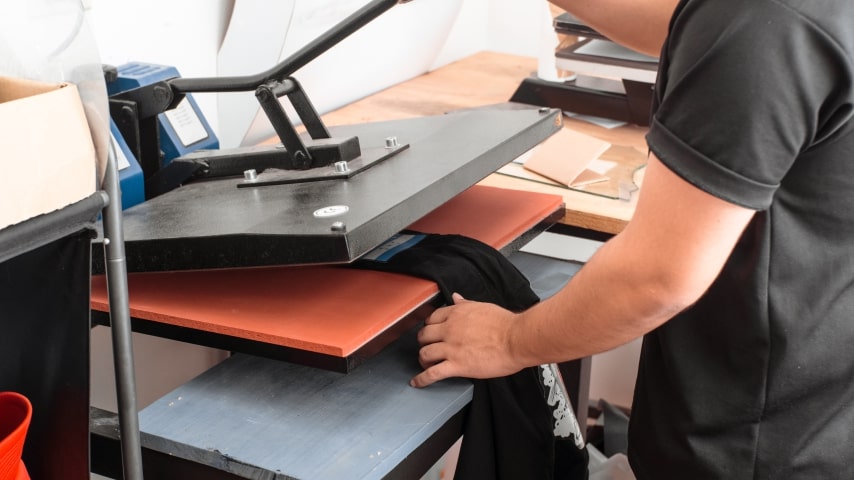Advancements in DTF Printing: Exactly How It's Reinventing the Sector
The textile printing sector is undertaking a considerable transformation, driven by the innovative advancements in Direct-to-Film (DTF) technology. With superior ink solutions, improved film and sticky technologies, and the assimilation of automation, DTF printing supplies vibrant, sturdy prints on a selection of materials, meeting the raising need for customization.
Developments in DTF Modern Technology
Progressing quickly, DTF (Direct-to-Film) printing modern technology has undergone significant renovations that are changing the textile industry. Modern DTF printers utilize innovative ink formulations that result in dynamic, sturdy prints with high resolution and shade accuracy.
Furthermore, innovations in film and adhesive modern technologies have improved the overall application process. New films provide better elasticity and attachment, enhancing the resilience and washability of the published styles - screen printing. This makes certain that the prints keep their honesty and vibrancy even after multiple cleans
Lastly, environmental considerations have actually motivated the advancement of eco-friendly DTF remedies. Suppliers are increasingly adopting sustainable practices, such as utilizing water-based inks and recyclable films, straightening with global efforts to minimize the market's eco-friendly impact.
Advantages Over Conventional Approaches
When contrasting DTF printing to conventional approaches such as display printing and direct-to-garment (DTG) printing, several distinctive benefits emerge. screen printing. One of one of the most considerable benefits is its convenience in textile compatibility. Unlike display printing, which often calls for certain textile types, DTF printing can be related to a more comprehensive series of products, including cotton, polyester, and blends, without jeopardizing print quality
One more notable advantage is cost-effectiveness, especially for small to medium-sized orders. Standard display printing becomes financially viable only at higher volumes as a result of the arrangement expenses entailed. In contrast, DTF printing removes these configuration expenditures, making it a lot more inexpensive for smaller sized sets and one-off designs.
Moreover, DTF printing succeeds in longevity and washability. The prints created are durable and keep their integrity with several laundry cycles, outperforming DTG prints that might fracture or fade in time. Furthermore, DTF printing offers faster turnaround times. Without the requirement for considerable arrangement, layouts can be printed and moved in a portion of the moment needed for display printing.

Boosted Layout Capabilities
DTF printing offers boosted design abilities that establish it apart from conventional printing techniques. The procedure involves printing a style onto an unique film, which is then transferred to material.
In addition, DTF printing supports a wide range of fabrics, including cotton, polyester, blends, and even non-textile substratums. This flexibility opens up doors for creative applications in varied markets such as style, home style, and advertising products. Unlike screen printing, which can be restricting as a result of color splitting up and stencil production, DTF printing simplifies the process, making photo-realistic and multi-color designs a lot more obtainable.
Additionally, DTF printing excels in accomplishing constant color precision and vibrancy. In significance, DTF printing encourages developers to press the limits of creativity, providing visually magnificent results that were formerly unattainable.
Expense and Time Performance
One of the remarkable benefits of DTF printing lies in its expense and time performance, making it a preferred choice for numerous companies. Unlike traditional methods that call for considerable investment in screens and setup times, DTF printing allows for direct application onto different materials with very little preparation.
In addition, DTF printing stands out in creating short runs and custom orders cost-effectively. The capability to create premium prints without the demand for big quantity dedications reduces waste and maximizes source allocation. This flexibility is especially beneficial for tiny organizations and startups that may not have the resources to buy large production runs.
In terms of operational effectiveness, DTF printing's streamlined workflow improves total productivity. The technology's compatibility with a large range of textiles and substrates better broadens its application extent, decreasing the requirement for numerous printing systems. Consequently, organizations can achieve a faster turn-around time, boosting client satisfaction and competition out there. Hence, DTF printing stands out as a transformative service in the printing market.
Future Trends in DTF Printing
Preparing for future patterns in DTF printing exposes a landscape noted by fast technological innovations and enhanced market need (DTF printing). One significant trend is the combination of man-made intelligence (AI) and artificial intelligence formulas to optimize print top quality and enhance operations. AI-driven systems can predict prospective issues and readjust settings in real-time, ensuring regularly high-quality result
Additionally, developments in lasting a knockout post materials and environmentally friendly inks are expected to acquire grip. As ecological issues come to be much more important, the sector is likely to see a change in the direction of non-toxic and eco-friendly inks, lowering its eco-friendly impact.
Personalization and personalization will certainly also play an essential function. With the growing consumer need for distinct, personalized products, DTF printing innovations are developing to offer even more elaborate and detailed modification choices. This pattern is supported by improved software options that permit more facility and imaginative designs.
Finally, the combination of DTF printing with various other electronic systems and ecommerce services will certainly come to be a lot more seamless. This connection will make it possible for businesses to supply on-demand printing services straight to consumers, additionally driving development in the sector. These fads jointly highlight a future where DTF printing not just meets yet surpasses the advancing needs of the marketplace.
Verdict

When contrasting DTF printing to standard methods such as display printing and direct-to-garment (DTG) printing, numerous distinct advantages hop over to here arise. Unlike screen printing, which usually needs specific material kinds, DTF printing can be applied to a broader variety of materials, including cotton, polyester, see this here and blends, without compromising print high quality.
DTF printing supplies boosted design capacities that establish it apart from traditional printing approaches. Therefore, DTF printing stands out as a transformative service in the printing industry.
Innovations in DTF printing significantly boost the fabric printing market by supplying premium print high quality, adaptability, and efficiency.